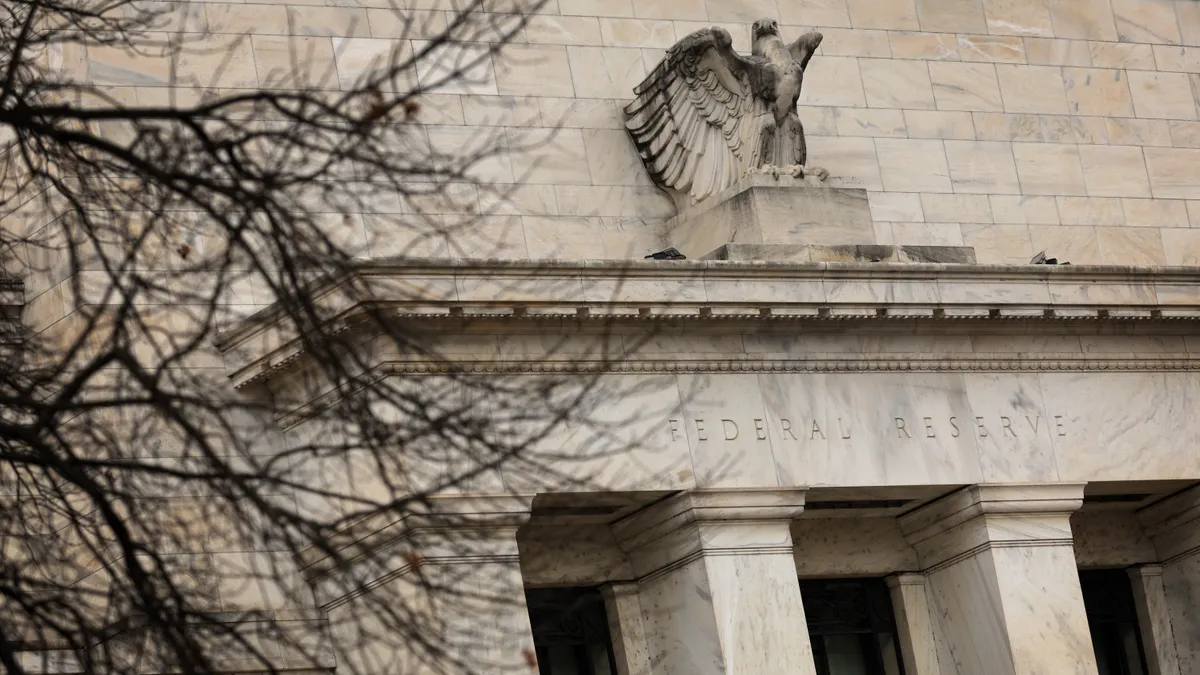Dive Brief:
- Small businesses see a murkier outlook for financing and the broader economy than at any time since the height of the pandemic, the National Federation of Independent Business said Tuesday as Federal Reserve policymakers met to consider holding borrowing costs at a two-decade high longer than they forecast early this year.
- The NFIB’s Uncertainty Index — which gauges the view of small businesses on prospects for sales, hiring, financing, capital expenditures, expansion and the economy — surged in May to the highest level since November 2020, the NFIB said.
- “Views about future business conditions are at the worst levels seen in 50 years,” NFIB Chief Economist Bill Dunkelberg said in a statement, noting that small businesses generate more than 40% of U.S. economic growth and employment. The federation’s Optimism Index rose less than one percentage point to the highest level this year while remaining below the historical average of 98 for the 29th straight month.
Dive Insight:
Fed officials, after a two-day meeting on Wednesday, will likely flag slower-than-expected progress in restoring inflation to their 2% target while downgrading from three to two their median projection for the number of quarter-point cuts in the federal funds rate this year, according to trading in federal funds futures and economists surveyed by Wolters Kluwer.
At the same time, policymakers will probably hold the federal funds rate at a range between 5.25% and 5.5%, according to the economists and the odds set by futures traders.
The Fed “should project two rate cuts this year and a cutting cycle that begins in September,” economists at Bank of America Securities said Tuesday in a report. “Incoming data should give the Fed confidence that the economy is cooling, but it needs more evidence of disinflation to cut.”
Economic growth has shown signs of slowing recently, with industrial production, construction and consumer spending falling short of estimates.
Yet hiring has remained robust, with employers adding 272,000 jobs in May, the Labor Department reported Friday.
The higher-than-anticipated gain in payrolls prompted the Atlanta Fed on Friday to raise its estimate for economic growth during the second quarter to a 3.1% annual rate from 2.7% the prior day. Unemployment, although edging up last month to 4% from 3.9% in April, has not exceeded 4% for 30 months.
The economy has yet to feel the full bite from the Fed’s most aggressive monetary tightening in four decades, according to the Wolters Kluwer survey of economists from companies ranging from Goldman Sachs to Ford Motor and Eaton Corp to Wells Fargo.
The Fed’s current federal funds rate “is thought to reflect a very tight policy, exerting significant restraint on the economy,” Wolters Kluwer said in report, noting that “79% of respondents think that the economy has not yet felt all the restraint from past rate hikes.
“So there is more restraint to come even if the FFR remains unchanged,” Wolters Kluwer said.
Small businesses have not faced a greater challenge gaining financing since June 2010, NFIB said, citing its survey.
The average interest rate on short-term loans to small businesses exceeds 9%, the highest rate since 2007, Pantheon Macroeconomics Chief Economist Ian Shepherdson said Tuesday in a note to clients.
“Credit has been tougher in the past few decades only during or just before recessions,” he said. The high cost of borrowing is prompting small businesses to cut hiring, capital and inventory investment.
The pullback by small businesses “looks likely to get significantly worse before it gets better, given that [monetary] policy operates with a long lag,” Shepherdson said, noting that a surge in borrowing costs for small businesses usually precedes a slump in economic growth.
“The Fed’s tightening cycle began in March 2022, so the past relationship points to the brunt of higher rates hitting activity over the next year or so,” he said.












